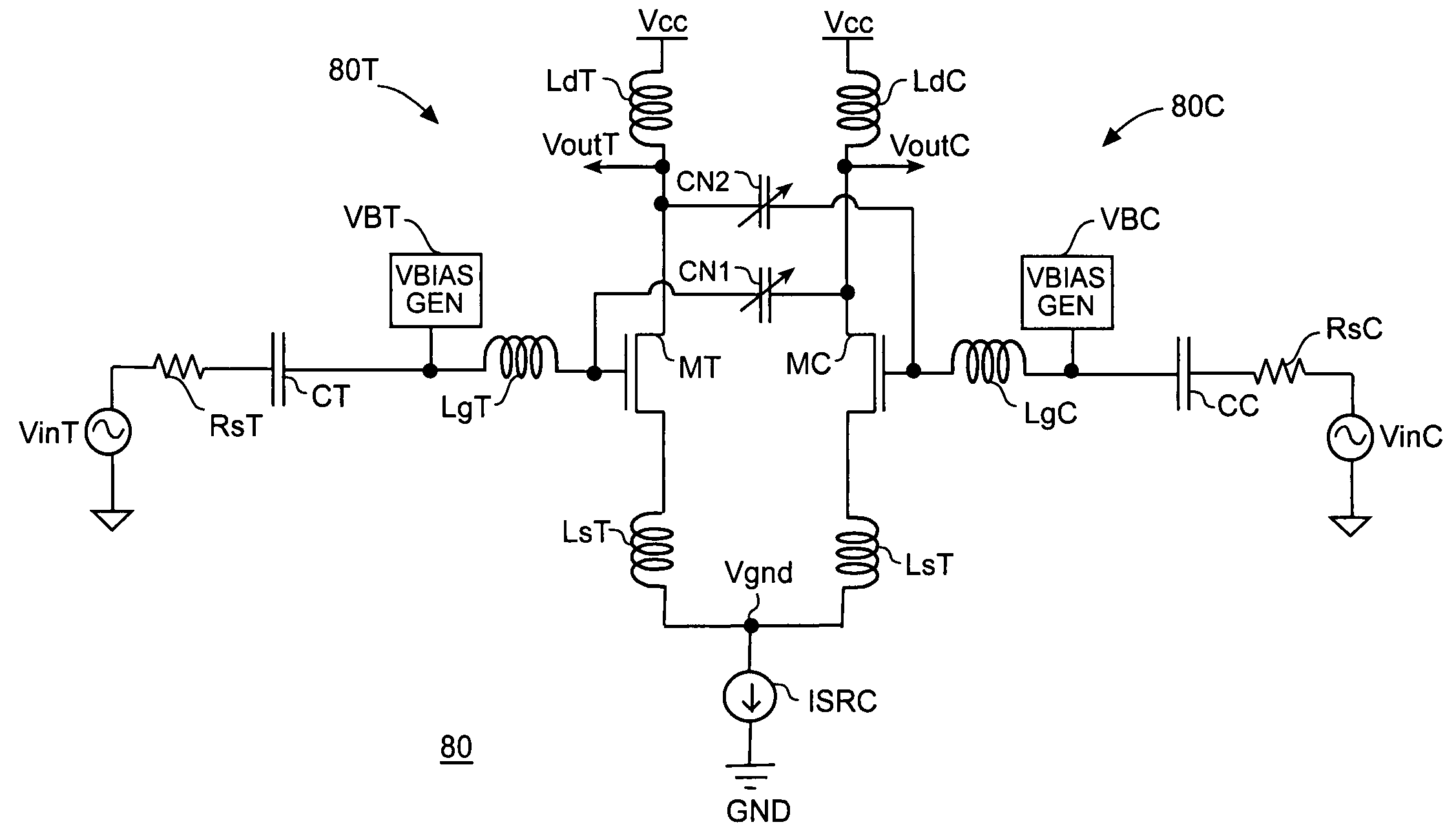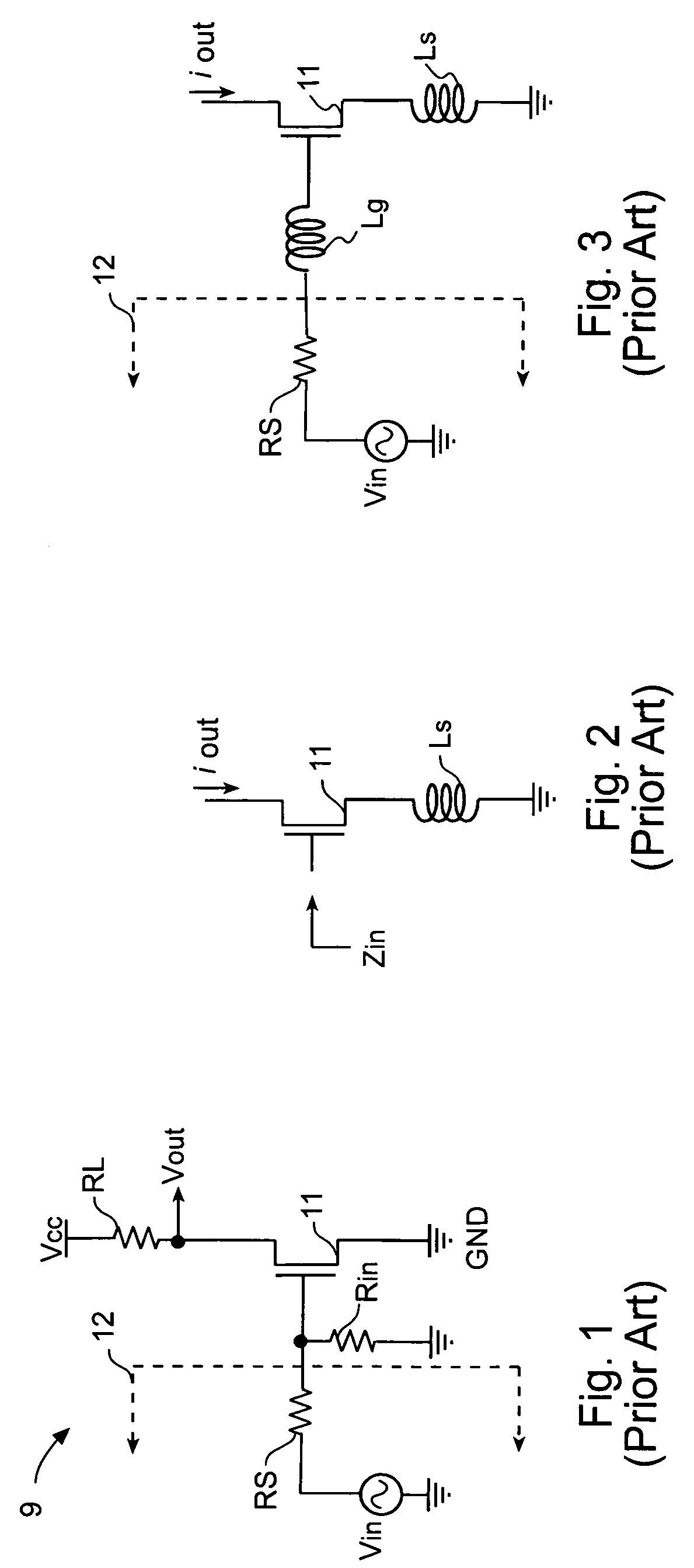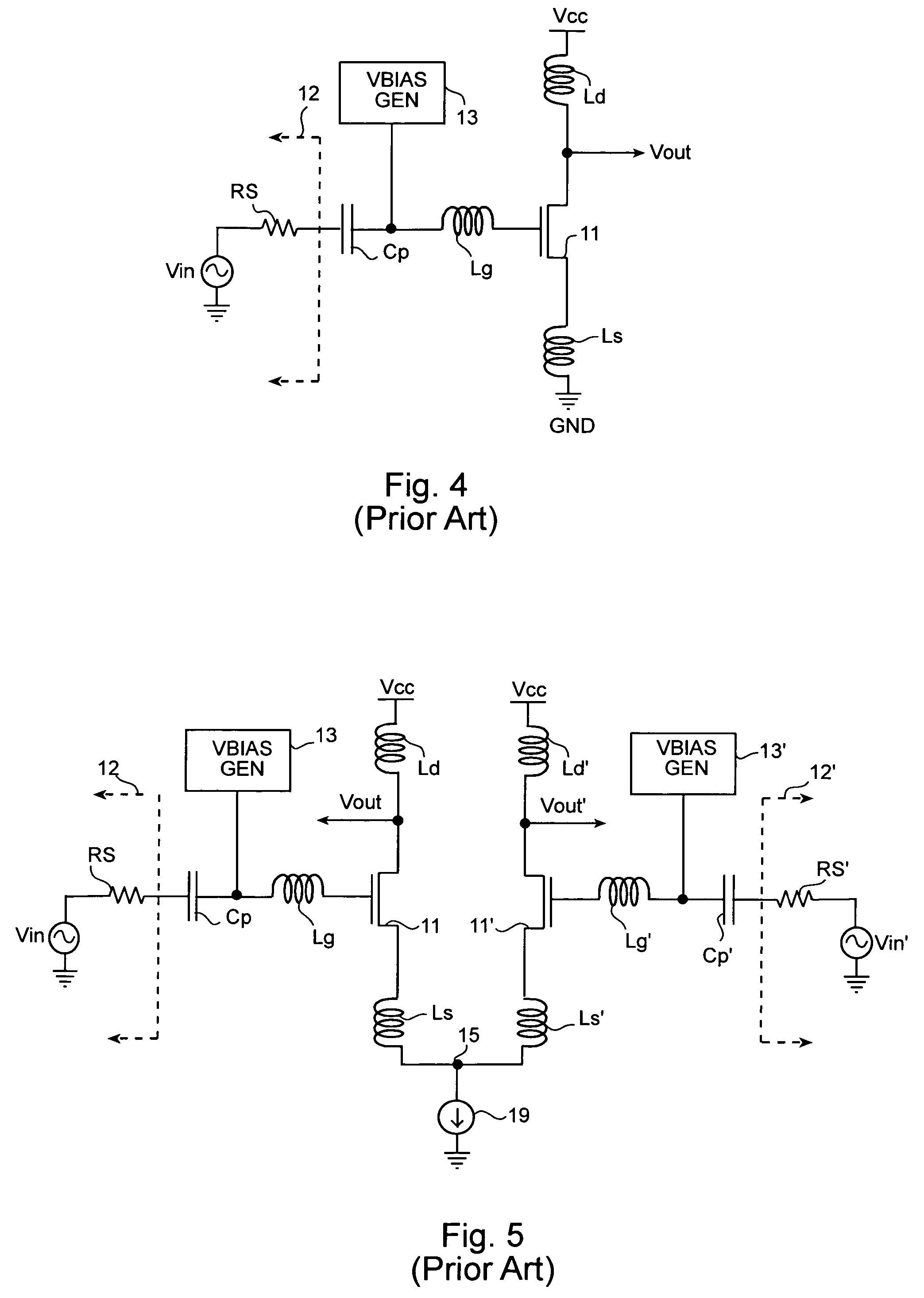Neutralization techniques for differential low noise amplifiers
a low-noise amplifier and neutralization technology, applied in the field of differential low-noise amplifiers, can solve the problems of inconvenient lna application, inconvenient lna application of basic (lower frequency) amplifier configuration and techniques, and inability to adapt to high-frequency applications, so as to improve input-output isolation without reducing available voltage headroom
- Summary
- Abstract
- Description
- Claims
- Application Information
AI Technical Summary
Benefits of technology
Problems solved by technology
Method used
Image
Examples
Embodiment Construction
[0046]With reference to FIG. 8, a differential low noise amplifier, LNA, 80 in accord with the present invention includes a true branch 80T and a complementary branch 80C. The true branch 80T of LNA 80 includes a first (true) transistor MT for receiving a true signal, a first gate inductance LgT coupled to the control gate of MT, a first source inductance LsT coupling the source node of MT to a virtual ground node Vgnd, a first drain inductance LdT coupling the drain of MT to Vcc, a first voltage bias generator VBT, a first input coupling capacitor CT, a first input signal VinT, and the first input signal's corresponding source impedance RsT.
[0047]In the present case, true and complementary transistors MT and MC, are implemented as metal oxide semiconductor, MOS, transistors, but it is to be understood that true and complementary transistors MT and MC may be implemented as bipolar junction transistors, junction field transistors or other known field effect transistors.
[0048]The comp...
PUM
 Login to View More
Login to View More Abstract
Description
Claims
Application Information
 Login to View More
Login to View More - R&D
- Intellectual Property
- Life Sciences
- Materials
- Tech Scout
- Unparalleled Data Quality
- Higher Quality Content
- 60% Fewer Hallucinations
Browse by: Latest US Patents, China's latest patents, Technical Efficacy Thesaurus, Application Domain, Technology Topic, Popular Technical Reports.
© 2025 PatSnap. All rights reserved.Legal|Privacy policy|Modern Slavery Act Transparency Statement|Sitemap|About US| Contact US: help@patsnap.com



